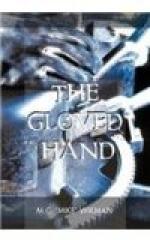“And I,” said the doctor. Then he looked at his watch. “It’s time we were getting back,” he added.
He took us over in his car, and we found the jury, under the guidance of Simmonds, just coming out of the house, each member smoking a fat black cigar at the expense of the State. They had been viewing the body and the scene of the crime, but as they filed back into their seats, I noted that they seemed anything but depressed. The lunch had evidently been a good one.
Sylvester was recalled to finish his testimony. He explained the system of curves and angles by which finger-prints are grouped and classified, and the various points of resemblance by which two prints could be proved to have been made by the same finger. There was, first of all, the general convolution, whether a flexure, a stria, a sinus, a spiral, a circle, or a whorl; there was, secondly, the number of ridges in the convolution; and there was, thirdly, the angles which these ridges made. If two prints agreed in all these details, their identity was certain. He then proceeded to show that the prints made that morning by Swain did so agree with the photographs of the prints on the garments. Finally the witness was turned over to me for cross-examination.
“Mr. Sylvester,” I began, “are you willing to assert that those finger-prints could have been made by no man in the world except Mr. Swain?”
Sylvester hesitated, just as I hoped he would do.
“No,” he answered, at last, “I can’t assert that, Mr. Lester. There may be three or four other men in the world with finger-prints like these. But the probabilities against any of these men having made these prints are very great. Besides, it is a thing easily proved—the number of persons who might have committed the crime is limited, and it is an easy thing to secure prints of their fingers.”
“That is what I was about to propose,” I agreed. “I should like the finger-prints taken of every one who was in the house Thursday night.”
“Do I understand that your case stands or falls upon this point?” asked the coroner.
“Your Honor,” I answered, “my client cannot explain how the prints of his fingers, if they are his, came to be upon that robe. The one thing he is certain of is that they were not placed there by him. Not once, during the entire evening, was my client near enough to Mr. Vaughan to touch him; not once did he so far lose consciousness as to be unable to remember what occurred. We have racked our brains for an explanation, and the only possible one seems to be that the prints of the real murderer resemble those of my client. And when I say the real murderer,” I added, “I do not necessarily mean one of the persons whom we know to have been in the house. Outside of these finger-prints, there has been absolutely no evidence introduced here to prove that the crime might not have been committed by some person unknown to us.”




